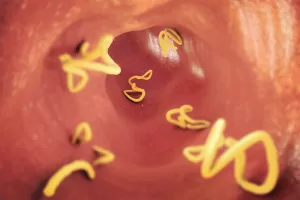Some health problems are dangerous and silent at the same time. Their manifestation occurs after quite a long time after the contamination but they are very severe and irreversible. These are usually parasitic diseases like the one that is called river blindness. How and why does it occur? What about treatment and prevention options? Let’s discover the answers to these and other related questions.
What is River Blindness
This state is also called onchocerciasis due to a worm, which causes it. For the spreading of it, Simulium flies are required. They live near rivers in Africa and South America. According to scientific estimations, more than 18 million people are affected worldwide and nearly 270,000 have lost sight due to this condition.
Causes of River Blindness
It is important to understand the ways of development to treat and prevent this condition properly. For instance, it does not spread from human to human. It requires a special fly that provides the worm inside the body.
Onchocerca volvulus parasite
All the symptoms in humans are caused by this worm. However, it needs a way to get inside the human body and this way is provided by special blackflies.
When inside the body, the population of worms grows and the immune system reacts causing inflammation and other specific symptoms.
Black Fly (Simulium species)
The flies ingest the worm in the area of their habitat. Inside their bodies, the larvae continue to grow and develop. When such an infected fly bites a human, the larvae get inside and become an internal parasite.
Symptoms of River Blindness
The main problems that appear due to this condition are related to skin and eyes. They include:
- itching of the skin;
- lesions of the eyes;
- rash or nodules that appear under the skin.
It is worth noticing, that an infected person feels fine until the development and reproduction of the parasite become significant. This takes from 12 to 18 months, and therefore it is challenging to connect the bite of a fly with the symptoms that appear a year later.
Long-term Effects of River Blindness
While the disease is in progress, the vision becomes lower, and at last, blindness occurs. This is the most severe side effect that may happen as there is no way to bring the vision back.
River Blindness Diagnosis and Treatment
Much attention is paid to the problem of this state, especially for early diagnostics. The treatment is in any case long, but the sooner it is started, the more promising the results.
Diagnostic tests and procedures
There are several ways that are utilized for the diagnostics, namely:
- A skin biopsy. Small samples of the skin are taken and investigated under a microscope for the signs of infection.
- The investigation of the eyes for lesions. A slit lamp and a microscope are also used in this case.
- A blood test may reveal antibodies to the parasite.
The combination of all the above-mentioned methods is the best way to prove the presence of the infection.
Treatment options
There is an oral medicine that is utilized for the specific treatment. It is called ivermectin. However, it should be noted, that it kills the larvae only while the adults stay in the body.
Therefore, the treatment may last from 10 to 15 years. This is the lifetime of an adult female parasite that continues to reproduce until it dies.
Prevention
If you can avoid countries where the parasite and the flies live, that is the best way to avoid contamination. If you need to visit the region, do not neglect the following rules:
- treat all your clothes with insecticides like permethrin;
- spray the insecticides with diethyltoluamide on your skin;
- do not expose your ankles;
- switch to clothing with long sleeves.
Prevention programs
Given the severity and the incidence of this disease, the WHO has been launching different programs to cope with it since 1974, namely:
- The special programme for control worked from 1974 to 2002 in West Africa. The insecticides were widely sprayed on the infected areas and ivermectin was distributed among locals.
- The additional African Programme over this condition was started in 1995 and was active until 2015. It also provided the required treatment to the infected areas.
- A new program was launched in 2016 to continue its prevention on a large scale.
There are already some countries that have coped with this problem.
Summary
In a nutshell, river blindness was successfully combated in many African countries. However, the risks are still valid and the WHO launches and supports new initiatives to eliminate the problem once and for all. If you are going to visit the infected areas, do not neglect the prevention measures and stay careful.
FAQ
Can river blindness be cured?
The treatment is a long and challenging process. If the blindness occurred, it is irreversible. Still, the parasites can be eliminated from the body fully after long years of treatment.
How contagious is river blindness?
The disease is not spread between people, so it is not contagious. Still, the insects contribute to its spreading through the population
What are three symptoms of river blindness?
It causes a rash, itching skin and problems with vision that are followed by irreversible blindness.
What causes river blindness?
This condition appears due to a worm that gets inside the body with the help of special flies. The vital activity of its population together with the response of the body contribute to the symptoms.




